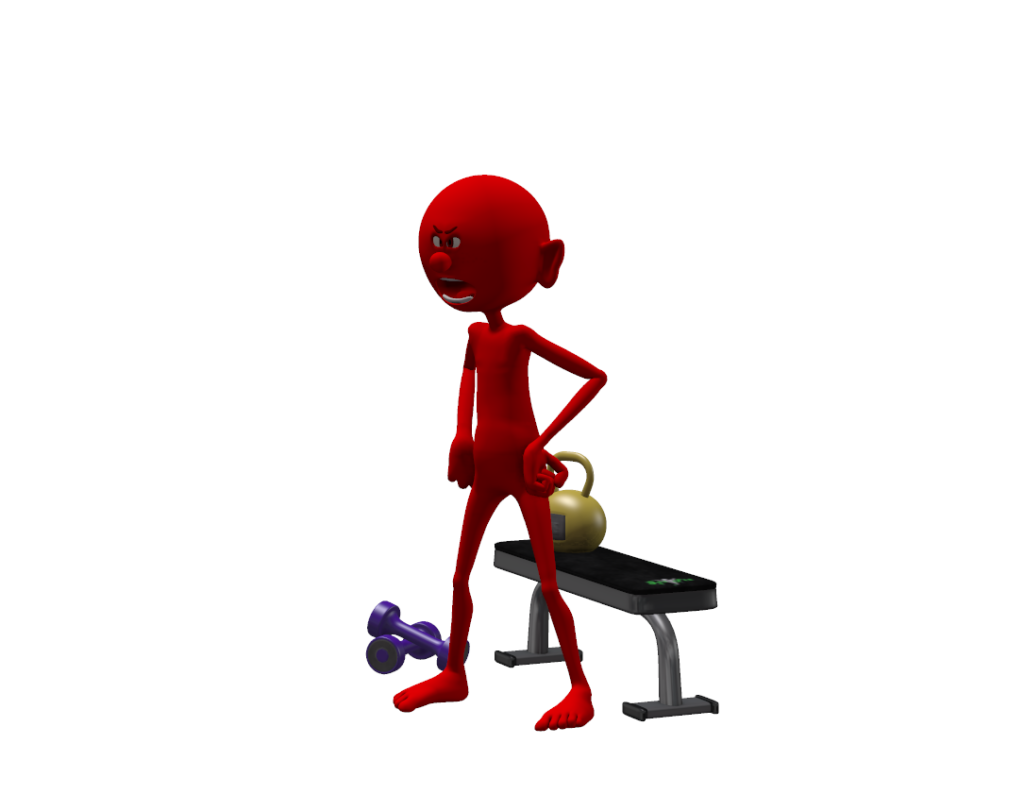What’s wrong with Crossfit™?
Possibly very little, yet it seems that the training mode, philosophy, cult – call it what you will, provokes some extreme responses in exercise or health professionals. Full disclosure, while I haven’t had any direct involvement with, or particular knowledge of Crossfit™ (CF), my morning runs often took me past CF groups some knock-off versions, engaging in field sessions. I often shared with my students how much seeing those exercisers made the exercise professional within me cringe!
In brief – Crossfit™ (CF) emerged in 2000, as the brainchild of Greg Glassman, a gym owner whose work transitioned into some contract conditioning of police personnel. That turned out to be his lab for developing CF – ‘functional’ workouts that featured short-duration, high-intensity sessions, using unorthodox combinations of weight training exercises, plyometric and gymnastic manoeuvres, and high-intensity aerobic intervals. Several research studies have shown that this high-intensity interval style of exercise, in combination with resistance training, is metabolically and physically demanding and particularly effective at stimulating cardiovascular fitness and short term weight loss. With its focus on functionality, and high-intensity exertions producing fatigue with minimal time investment, CF appealed to consumers and soon became a highly successful international business model. CF has spawned many copycat programmes. No surprises there – note that the 2018 Survey of Fitness Trends listed high-intensity interval training, group training, body weight training, strength training and functional fitness as numbers 1, 2, 4, 5 and 10 respectively. These modes have been referred to collectively as extreme conditioning programmes (ECPs), a term which strangely seems to have annoyed the CF people. There is no doubt that CF (and clones) are conditioning programmes, and most of us would see them as being at the extreme end of the training spectrum – so I’m comfortable using the term. Glassman has been quoted as saying ‘…It can kill you…’, and certainly a lot of the CF promotional material celebrates the extreme, so I’m not sure that they can have it both ways – but that’s drifting off topic….

The thing that seems to have most people taking shots at CF and ECPs, is the dangers associated with participation. High injury rates and the risk of rhabdomyolysis, are bandied around as a major concern with ECPs. I will deal with rhabdomyolysis first – this serious condition is a consequence of damage to muscular tissue that results in release of myoglobin, creatine kinase, and other cell contents into the circulation. This is not great for homeostasis and not especially good for the kidneys. Rhabdomyolysis can lead to hospitalisation and in extreme cases death. Because it is uncommon, when rhabdomyolysis occurs in association with exercise (exertional rhabdomyolysis, ER), people start paying attention. Exertional rhabdomyolysis is typically from excessive, strenuous and/or repetitive, exercise, that often has an eccentric emphasis and maybe uncustomary for the individual. Several isolated cases of ER have been associated with ECP (e.g. Bergeron et al, 2011; Rathi, 2014), but…. ER has also been associated with overdoing football or swimming training. I used those two examples as swimming involves no impact and very little eccentric muscle action, and (American) football involves a whole lot of both. So maybe the ER is about overdoing intensity rather than the activity itself. For novice exercisers the potential to overextend oneself is high. By way of example, Cutler et al (2016) documented 14 cases of ER over a 4 year period, linked to spinning exercise. At that time (2013 – 2014) spinning classes were a new fad, and accounted for 33% of all rhabdomyolysis in that hospital. The authors noted that ER often resulted within 72 hours of a participant’s first spinning class. Novice exercisers may have viewed the spinning fad as a quick weight loss solution, and overextended themselves. So, Rhabdo might be about the nature of exercise but it is also likely a factor of the volume and intensity of exercise undertaken relative to one’s fitness capabilities. There are also concerns that the various training, weight loss supplements, and energy drinks may contribute further to the problem.
There are many anecdotal claims that ECPs result in an inordinate number of injuries. A consensus paper (Bergeron et al, 2011) on ECPs warned of a disproportionate risk of injury particularly for new participants, but the only real supporting documentation for this observation was one case of ER and one injury lawsuit that both had been associated with CF. Smith et al (2013) examined the responses of 43 participants completing a 10-week CF style programme. With 16% of their participants not completing the programme, these authors suggested that this may be linked to injury, and questioned the risk-benefit ratio for anyone already reasonably fit. The CrossFit organisation filed a successful suit against the publisher of the article, the National Strength and Conditioning Association (NSCA). The NSCA was required to publish a correction noting that the injury rates used in the study should be disregarded. So it’s a sticky one, and with ECPs being a relatively new phenomena, there has been little formal research on injuries. I managed to review 10 papers specifically on injury and CF. Most of those studies surveyed CF participants and the consensus seemed to be an incidence around 2 to 3 injuries per 1000 hours of participation. In their survey, Aune et al (2017) reported a 34% injury prevalence (34% of survey participants were injured at some time) and an estimated incidence of 2.71 injuries per 1000 hours. That incidence was comparable (or lower than) injury rates seen in competitive weightlifting, distance running, rugby, or gymnastics. Aune et al (2017) pointed out that those with <6 months of participation were more likely to get injured than veterans (6.34 versus 2.50/1000 hours).
In summary the research seems to demonstrate that CF and other ECPs are likely no more dangerous than other sports or conditioning methods. The things that we do know are that the shoulder and back are the most frequently injured sites in these programmes, that novices are more likely to be injured, and that previous injury was a strong predictor of injury risk. The 10th man raises his hand here and wants to point out that there are some nuances around injury and injury reporting that need consideration. Most of the injury studies on CF were surveys that asked about self reported injuries. The definition of injury is always a tricky one. In sport a notifiable injury is usually something serious enough to cause an individual to miss a practice, training session or game. For ECPs, does an injury mean that you had to miss a session, had to seek treatment, or had to modify techniques or skip certain exercises? The CF injury surveys were completed by active participants in ECP programmes. What they will have missed are individuals who had already dropped out of ECPs because they were injured. There seems to be dissonance between what these studies found and what people are reporting – Hmmm – let’s just leave it at that!
As exercise professionals we can also look at these programmes using a different lenses and think about how we could make them safer without destroying their character.
Here’s my list;
- The workouts are intense and functionally and metabolically demanding, so conduct a comprehensive screening. Not just a health check, but ascertain an individuals exercise history, current fitness tolerance and injury history.
- Start low, progress slow! ECPs like CF claim to be scalable, meaning the exercises and sessions can be made easier or more challenging to match the abilities of the participant. Some ECPs provide introductory classes with more individual coaching, but that doesn’t mean that fundamental principle of progression can be ignored. Establish exercise tolerance before progressing.
- Structure sessions so that safety is as important as going hard. One of the features of ECPs is that they often use unorthodox progressions, not only across sessions, but also within sessions. Traditional resistance training for example follows a pattern of multipoint exercises before isolated single joint exercises for reasons that include safety. So make sure sessions build gradually up and then down.
- Monitor carefully for fatigue and unsafe technique. Undertaking maximal repetitions when you are not reasonably conditioned is going to result in early fatigue, and inevitably poor mechanics and unsafe movement techniques.
- Choose exercises to suit the abilities of participants. Many exercises used by ECPs are complex and require excellent technique, something that is not just ‘picked up’ in a couple of sessions. After all, well conditioned athletes can take 2-3 seasons to master some lifts.
- Think bout the effect of load and fatigue on exercises. While innovative and challenging, some exercises move body parts beyond their normal physiological range (e.g. shoulder and lumbar spine) – when you add load and fatigue, the result can be injury.
- All in all if we were true to the first principles of exercise prescription, we might conduct fuller screening, we may work on basic exercise tolerance and technique before progressing further, and we may think twice about certain exercises completed under fatigue where deterioration in exercise form puts anatomical structures under undue stress.
As exercise professionals we hopefully can look at ECP objectively and accept that there are numerous benefits to these types of programmes. CF style programmes permit novices and veterans to workout together in a competitive and socially supportive environment. That has to be motivating, and something that keeps people coming back – surely every exercise professional wants that. The programmes are interesting, varied and attempt to be functional; these types of programmes are leading the trends list for a reason.
Interested in your thoughts – leave a comment
Phil
References
- Aune, K.T., Powers, J.M. (2017) Injuries in an Extreme Conditioning Program. Sports Health 9 (1);52-58.
- Becker, M. (2017) CrossFit, Inc. v. National Strength & Conditioning Ass’n: Industry Competitor Blames CrossFit for Injuring People in an Effort to Avoid Injuring Its Own Business, 24 Sports Law. J. 215
- Bergeron, M.F. et al (2011) Consortium for Health and Military Performance and American College of Sports Medicine Consensus Paper on Extreme Conditioning Programs in Military Personnel Current Sports Medicine Reports 10 (6); 383 -389.
- Cutler, T.S. (2016) Increasing Incidence and Unique Clinical Characteristics of Spinning-Induced Rhabdomyolysis
- Clin J Sport Med 26:429–431
- Glassman, G. (2005) CrossFit-Induced Rhabdo. Crossfit Journal
- Klimek, C. et al (2018) Are Injuries More Common With CrossFit Training Than Other Forms of Exercise? Journal of Sport Rehabilitation, (Ahead of Print) https://doi.org/10.1123/jsr.2016-0040
- Rathi, M. (2014) Two Cases of CrossFit®-Induced Rhabdomyolysis: A Rising Concern. Int J Med Students 2(3); 132-134.
- Smith, M.M. et al (2013) Crossfit- based high-intensity power training improves maximal aerobic fitness and body composition. J Strength Cond Res 27(11): 3159–3172.
- Thompson,W.R. Worldwide Survey Of Fitness Trends For 2018: The CREP Edition. ACSM’s Health & Fitness Journal 21(6); 10-19
